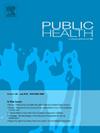童年的不良经历对土著居民一生健康结果的影响:系统回顾
IF 3.9
3区 医学
Q1 PUBLIC, ENVIRONMENTAL & OCCUPATIONAL HEALTH
引用次数: 0
摘要
目的不良童年经历(ace)被认为是影响健康结果的一个重要危险因素。本系统综述旨在综合全球研究的证据,调查ace与土著人口儿童期以外各种健康问题发展的关系。研究设计:系统评价。方法系统检索同行评议文献数据库中截止到2024年2月发表的研究论文。我们检索了世界各地不同土著人口中记录的不同类型ace及其相关问题健康结果的文章。观察性研究和行政关联研究设计符合纳入条件。个别研究的总结结果和不同的ACE测量工具的变化。我们根据现有证据构建了一个无环图,进一步探讨了ace与各种健康结果之间的潜在联系。结果共筛选2468篇文献,56篇纳入我们的综述。虽然衡量ace的工具多种多样,但大多数研究使用的要么是CDC-Kaiser研究工具,要么是Bernstein等人为主流人群开发的工具。没有发现土著特有的工具用于评估土著人口的ace。这些研究评估了几种类型的ace,其中性虐待和身体虐待是最常见的。所有的研究都报告了ace和不良健康结果之间的显著关联,其中心理健康问题比身体健康问题更受关注。结论目前还没有针对土著居民的有效工具,因此开发适合土著居民的ACE测量工具是至关重要的,这些工具可以捕捉与土著居民独特的历史和文化背景相关的创伤事件。考虑到这一人群中几种身体健康问题,特别是心血管和代谢疾病的患病率较高,应该进行更多的研究来确定它们与ace的联系。本文章由计算机程序翻译,如有差异,请以英文原文为准。
The impact of adverse childhood experiences on health outcomes of indigenous populations over the life course: A systematic review
Objective
Adverse childhood experiences (ACEs) are recognised as a strong risk factor affecting health outcomes. This systematic review seeks to synthesize evidence from global studies, investigating the associations of ACEs with the development of various health issues beyond childhood in Indigenous populations.
Study design
Systematic review.
Methods
We systematically searched for research articles published up to February 2024, in databases of peer-reviewed literature. We searched for articles on different types of ACEs recorded and their associated problematic health outcomes in different Indigenous populations across the world. Observational studies and administrative linkage study design were eligible for inclusion. Summary results of individual studies and variations of different ACE measuring tools are presented. We further explored the potential link between ACEs and various health outcomes by constructing an acyclic graph based on available evidence.
Results
We screened 2468 articles, and 56 were included in our review. Although tools for measuring ACEs were diverse, most of the studies used either the CDC-Kaiser study tool or tools by Bernstein et al. which were developed for the mainstream population. No Indigenous-specific tool was found that was used to assess ACEs in Indigenous populations. The studies assessed several types of ACEs, with sexual abuse and physical abuse being the most common. All the studies reported a significant association between ACEs and adverse health outcomes where mental health issues were more examined than physical health issues.
Conclusion
As we found that there was no validated Indigenous-specific tool for the Indigenous population, it is crucial to develop ACE measurement tools tailored to Indigenous populations that can capture trauma events related to their unique history and cultural context. Considering the higher prevalence of several physical health problems, especially cardiovascular and metabolic diseases in this population, more research should be conducted to identify their links with ACEs.
求助全文
通过发布文献求助,成功后即可免费获取论文全文。
去求助
来源期刊

Public Health
医学-公共卫生、环境卫生与职业卫生
CiteScore
7.60
自引率
0.00%
发文量
280
审稿时长
37 days
期刊介绍:
Public Health is an international, multidisciplinary peer-reviewed journal. It publishes original papers, reviews and short reports on all aspects of the science, philosophy, and practice of public health.
 求助内容:
求助内容: 应助结果提醒方式:
应助结果提醒方式:


